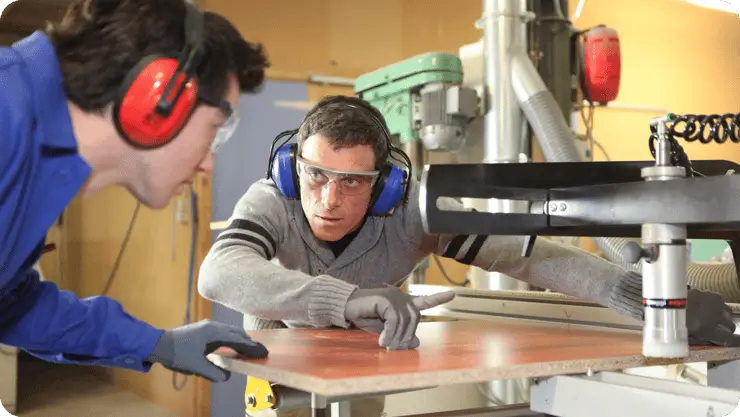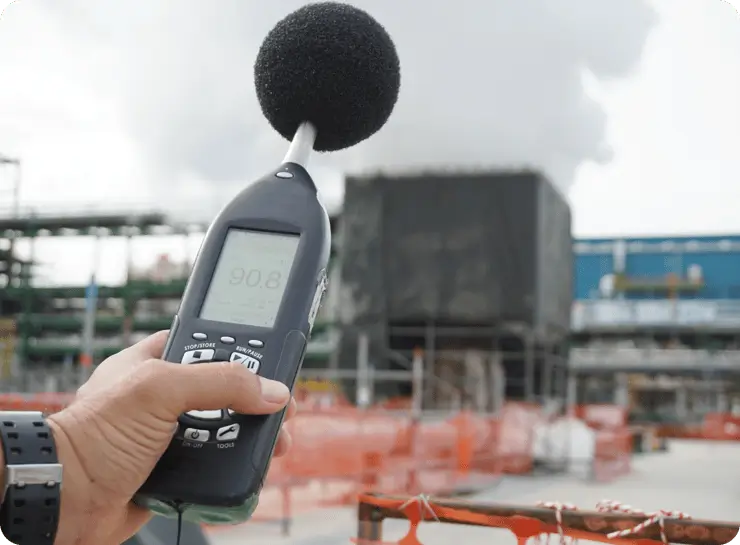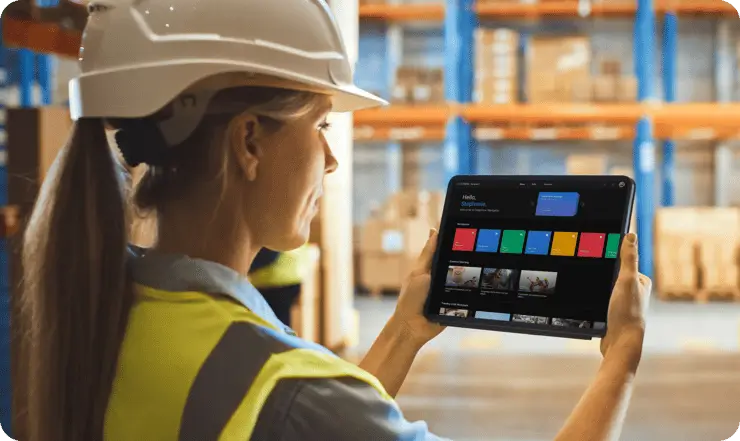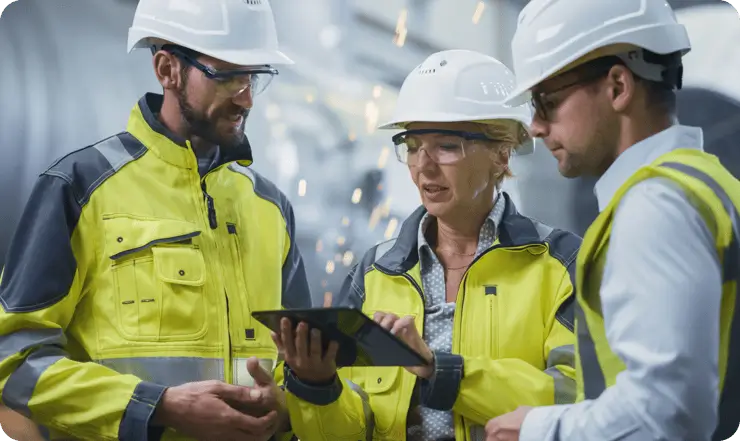Imagine stepping into a factory where the constant hum of machinery creates an ever-present soundtrack. Move to a construction site, and the racket of heavy equipment greets you, the rhythmic pounding of hammers and workers shouting to communicate over the noise. Now, step into a bustling retail store during peak hours, surrounded by the beeps of cash registers, customer inquiries, announcements over the PA system, and the shuffle of shopping carts and baskets.

Daily challenges can accumulate for employees working in such settings. One often has to raise one's voice, strain to hear coworkers, or rely on non-verbal communication. This isn't merely about convenience; it's about inclusivity. For a diverse team, where only some people share the same first language, the noise barrier only amplifies misunderstandings, contributing to risk, safety issues, and quality compliance challenges.
Enriched with subtitles, video training presents a potent solution to workplace language barriers. Workers can effortlessly follow processes in their chosen language, visually identifying each step, even amid background noise. DeepHow employs AI-driven transcription to transform videos into accessible content, further providing translations into over 50 languages.
In the past, as industries grew and urban centers became more bustling, the noise concern became impossible to ignore. The result was legislation meant to protect workers and the general public.
The Occupational Safety and Health Act of 1970 (OSHA):
Purpose:
Noise-Related Provisions:
The Noise Control Act of 1972:
Purpose:
Noise-Related Provisions:

Introducing such legislation was more than a response to public uproar for quiet. Its roots lie deeply in the tangible health repercussions of uncontrolled noise:
Physical Ramifications / Noise does more than disrupt our immediate comfort. Prolonged exposure to elevated decibel levels can result in hearing impairment. Moreover, the ongoing disturbances interfere with our sleep cycles, making restful sleep elusive and leading to various related health concerns.
Mental and Emotional Toll / Living or working in a chronically noisy environment isn't just annoying; it takes a toll on our mental well-being. Constant noise can aggravate stress levels, hinder our ability to concentrate on tasks, and instill feelings of helplessness or irritation. Over time, this erodes our overall quality of life, making joy and relaxation harder.
Workplace health and continuous noise aren't just operational concerns for businesses—they're human resource ones / Employees subjected to ongoing noise disturbances report feelings of burnout more frequently. The morale of employees decreases, and as a result, the previously harmonious dynamics of the workplace suffer. This threatens individual well-being and impacts overall productivity and the quality of collaborative efforts.
Noise is more than a mere distraction; it comes with tangible financial consequences. Statistics indicate losses ranging from $10,000 to $25,000 due to communication noise. But how do these numbers stack up?
Hearing is one thing; understanding is entirely different. In high-noise settings, the gap between the two can be vast:
Humans are inherently visual creatures. From ancient cave paintings to today's digital graphics, our history is painted with evidence of our reliance on visual mediums to communicate, learn, and remember.
In noisy environments, subtitles come to the rescue. While visuals provide context, subtitles offer clarity, where audio might be compromised. Here's why they're game-changers:
DeepHow recognizes the potency of combining visual cues with clear textual context. By championing visual learning and the integration of subtitles, they're paving the way for a more inclusive, efficient, and safe working environment.

Though often taken for granted, subtitles have played a transformative role in media consumption. Historically, they've been the invisible hand bridging divides—whether it's helping audiences cross language barriers or ensuring content is accessible to those with hearing impairments. Their function has been to guarantee that everyone, regardless of language proficiency or auditory capability, can understand the essence of the message.
Now, imagine the power of subtitles in a training context—particularly in environments characterized by significant noise disturbances. Here, their role takes on even more critical importance. It's no longer just about understanding a foreign movie or following along with a music video; it's about capturing every detail, every instruction, even amidst the chaos of a busy work floor.
"It's deafening, over 100 decibels, on the floor. So the text part on the videos is a huge thing." — Derek S, ABI.
Businesses aren't just local; they're global. Teams are more diverse than ever, with many languages spoken under a single roof. While this diversity is a strength, it can also challenge clear communication.
The Challenge of Global Businesses:
DeepHow steps in with a solution that goes beyond simple word-for-word translation.
DeepHow's Unique Translation Approach:
Beyond Translation – It's About Inclusivity:
The demand for flexible, on-the-go learning solutions is soaring. Recognizing this shift, DeepHow has developed an innovative mobile platform that offers a seamless user experience across various devices, allowing learners to engage anytime, anywhere. DeepHow's adaptive design caters to the modern learner's needs and ensures heightened retention. One notable success story is Anheuser-Busch, a business that transitioned to DeepHow's mobile training, witnessing a substantial surge in training competency time. DeepHow's mobile-centric approach ensures that quality training is always within reach, meeting the evolving needs of today's workforce.
Proven Results: Companies that integrate DeepHow's mobile solutions witness tangible improvements in training completion and engagement.
DeepHow advantages:

How do subtitles and visual learning tools truly transform the modern workplace? It's not just about making content more accessible; it's about creating a safer, more productive, and inclusive environment. These tools have emerged as game changers, offering many tangible benefits beyond the training room. Let's delve into how these simple yet effective tools can lead to profound results in the workplace:

The rapid advancements in today's industries have made it clear: clinging to old training methodologies can stifle progress. As the complexities and diversity of modern workplaces expand, there's an immediate need to reinvent how we approach training.
Adapting to Tomorrow's Challenges / DeepHow recognizes that the challenges of the business environment require specialized solutions. Gone are the days of the one-size-fits-all approach. Instead, we promote a paradigm shift towards training methodologies that are adaptive and cutting-edge, ensuring that every employee is equipped for the tasks ahead.
Putting People First / A thriving workplace isn't just about efficiency; it's about its people. A successful business makes every team member feel valued, safe, and empowered. By integrating solutions like those offered by DeepHow, companies are making a bold statement: "We prioritize our employees." The goal is clear: a workplace where inclusivity and efficiency coexist, and it's a vision well within our reach.

Start capturing, structuring, and activating your expert
knowledge today with a 14-day unlimited free trial.